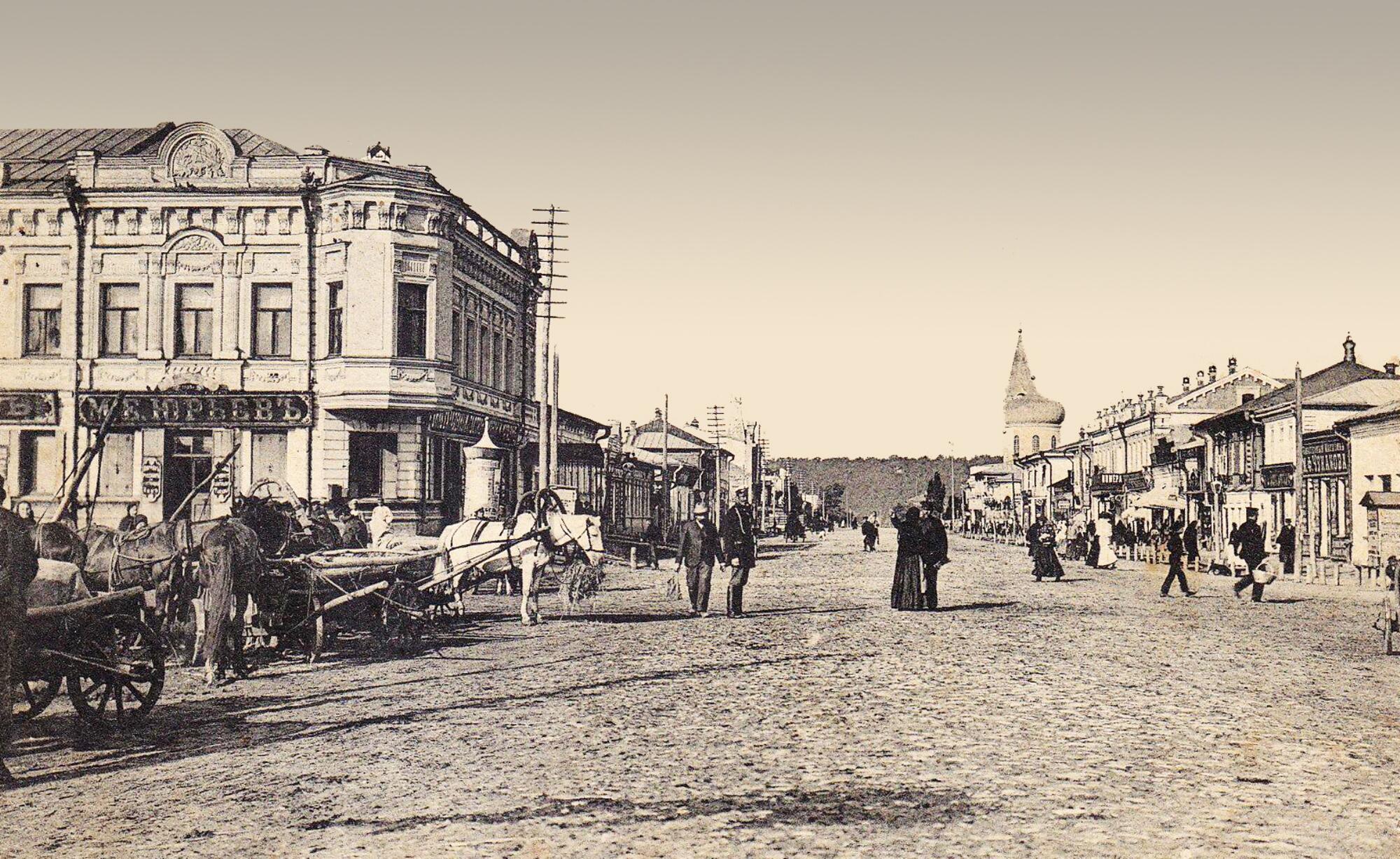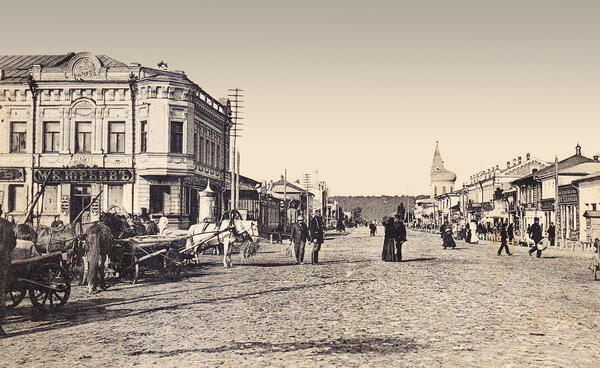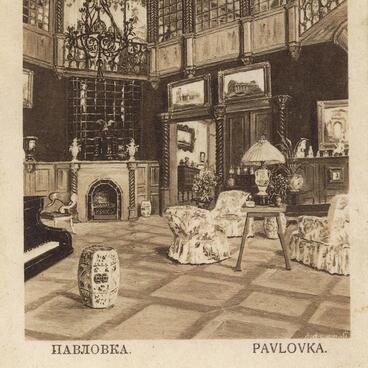This photo captured the central street of Borisoglebsk. At first it was called Dvoryanskaya, but now it bears the name Sovetskaya. The first mention of the street can be found in the18th century annals. The street planning was dense, which shows Borisoglebsk as a mercantile city.
The main buildings (small shops and boutiques, rental houses and banks) were constructed in the mid-to-late 19th and early 20th centuries. It’s interesting to highlight such buildings as Church of the Transfiguration (or the New Cathedral), the Merchant Centre, Weiss pharmacy, Russia furnished accommodations.
The pharmacy, or Weiss House belonged to the Baltic German Robert Weiss. There was a pharmacy on the ground floor and the apartment on the first floor. The building itself had two storeys and two balconies. At the moment the Borisoglebsk History and Art Museum is situated in the former library.
Active construction of one and two-storey buildings took place on Dvoryanskaya street. They were big and constructed in order to stay for ages (keeping descendants in mind). For the reason of the street being the central one, it was prestigious to have a house there. The merchants used to build their houses of wood and stone. The stone houses had thick walls, beaten lattices, and iron staircases. The wooden houses were decorated with expensive carving, had big windows and balconies. The residences of Popov, Batyrev, Tikhomirov, Bezobrazov, and other merchants were situated on Dvoryanskaya street.
In the late 19th significant changes took place in the life of Borisoglebsk. A few educational institutes were opened on Dvoryanskaya street and the nearest territories. Among them were the Tovarova’s private gymnasium and a three-year female gymnasium. Nearby on Novosobornaya street there was a building of Mariinskaya gymnasium built in the style of the French castle of the 16th – 17th centuries. The first private library was opened in Smirnov’s house. Later on in 1897 the public library started to function. It was visited by intellectuals and merchants. The library fund was mostly collected on a donation basis and as a result of buying books from the Moscow book stores. The big book collection was given to the library by chairman of a district council Vasily Izmailov. Some editions were ordered directly from Moscow.
Even centuries later Dvoryanskaya street managed to save its general image.



